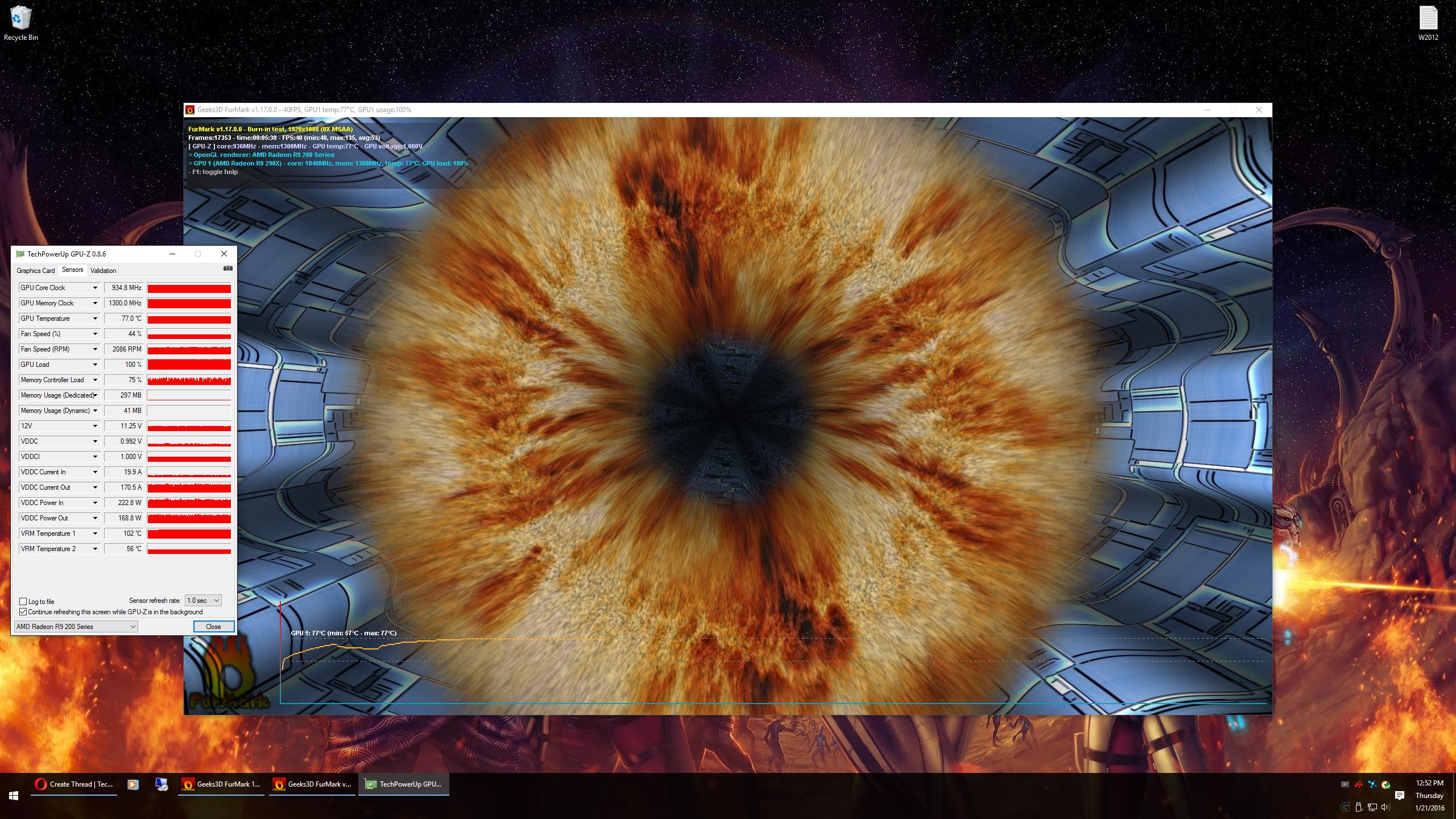- Joined
- Apr 14, 2015
- Messages
- 232 (0.06/day)
- Location
- Dominican Republic
| System Name | Old but Gold |
|---|---|
| Processor | A10-6800k : 4,700GHz@1.4v |
| Motherboard | Asus F2A85 V-PRO |
| Cooling | CoolerMaster Gemin 2 S524 with a modded crazy fan on it :D |
| Memory | 8GB G.Skill RipJawZ @2400MHz Dual Channel; 10-12-12-31 |
| Video Card(s) | Clud3D R9 290 RoyalAce core@1077 mem@1350 |
| Storage | Dual 500GB Seagate Barracuda |
| Display(s) | Asus VH198T Res 1440x900@75Hz, Aspect Ratio 16:10, 10000000:1 Contrast Ratio |
| Case | Diablotek Predator |
| Audio Device(s) | Onboard Realtek ALC892 Unlocked DTS and DD :) !!! |
| Power Supply | Corsair CX750M |
| Mouse | Logitech G502 |
| Keyboard | Logitech Generic PS/2 Keyboard ! |
| Software | Win 10 Pro 64-Bit |
| Benchmark Scores | 2,810 on Valley 1.0 Custom Preset: Ultra DX11 1080p 4xAA. |
r9 290 on heaven after 30mins, ambient temp is 31*C, fan profile set as (Current Temp+20%) to achieve preferred temps, noise not being an issue since i have 2 ceilings fans and a busy street right in front.








 Beyond that, you're fine
Beyond that, you're fine 
 .
.
